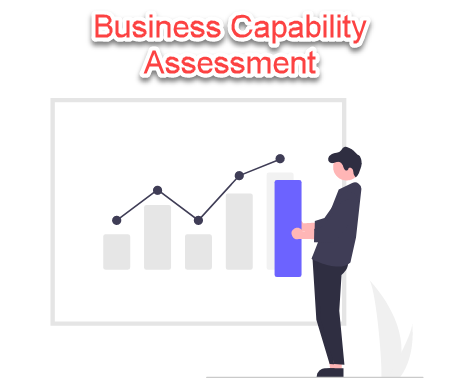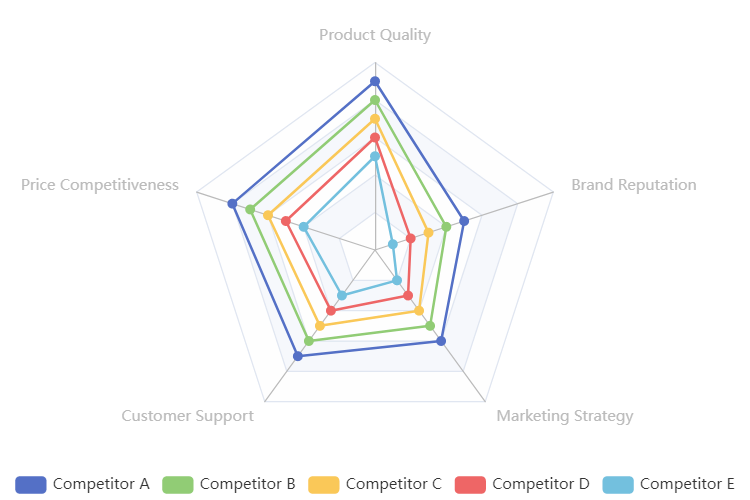How to Conduct Business Capability Assessment (with Report Template)
A business capability assessment is a process of evaluating an organization’s capabilities and resources, identifying its strengths and weaknesses, and determining its readiness to achieve its strategic objectives. This assessment helps businesses to identify the gaps between the current state and the desired state of the organization. It also enables the management to identify areas of improvement and prioritize investments to achieve the desired goals.

Business Capability Assessment Report Template
Here’s a template for a Business Capability Assessment Report:
Business Capability Assessment Report
-
Introduction
- Brief overview of the purpose and scope of the business capability assessment
- List of key stakeholders involved in the assessment process
-
Methodology
- Explanation of the methodology used to conduct the assessment
- List of data sources used to inform the assessment
-
Current State Assessment
- Overview of the current business capabilities
- Analysis of strengths and weaknesses of current capabilities
- Evaluation of current capability gaps and their impact on business operations
-
Future State Assessment
- Identification of future business capability requirements
- Analysis of future business capability gaps and their potential impact on business operations
- Prioritization of future capability needs based on strategic business objectives
-
Recommended Action Plan
- Proposed initiatives to address capability gaps and improve overall business capabilities
- Description of proposed timeline and budget for each initiative
- Explanation of how each initiative aligns with strategic business objectives
-
Conclusion
- Summary of key findings and recommendations
- List of potential risks associated with proposed initiatives
- Next steps and ongoing monitoring and evaluation plan
-
Appendices
- Supporting documentation such as data tables, diagrams, and additional analysis.
Note: This is a generic template and can be adapted to fit the specific needs of the business capability assessment.
Example – XYZ Retail Store
Here’s an example of a Business Capability Assessment Report for a fictitious retail company:
Business Capability Assessment Report
-
Introduction
The purpose of this business capability assessment is to identify strengths and weaknesses in the current business capabilities of XYZ Retail, and to make recommendations for future improvements. The assessment was conducted with input from key stakeholders, including senior management, department heads, and subject matter experts.
-
Methodology
The assessment was conducted through a combination of interviews, surveys, and data analysis. The assessment team also conducted a review of industry best practices and benchmarked XYZ Retail against its competitors.
- Current State Assessment
- Overview of current business capabilities: XYZ Retail has a strong presence in brick-and-mortar stores, but its online and mobile capabilities are underdeveloped.
- Strengths: High level of customer engagement in stores, strong brand recognition, efficient supply chain management.
- Weaknesses: Outdated online and mobile platforms, lack of personalization in customer interactions, limited social media presence.
- Capability gaps: Limited ability to offer personalized recommendations to customers, lack of mobile payment options, and inconsistent cross-channel experiences.
- Future State Assessment
- Future capability requirements: Seamless customer experiences across channels, improved data analytics and personalization, and more flexible payment options.
- Capability gaps: Limited integration of online and offline experiences, limited use of customer data for personalization, and lack of payment flexibility.
- Prioritization of future capability needs: Personalization, payment flexibility, and mobile optimization were identified as top priorities.
- Recommended Action Plan
- Proposed initiatives:
- Investment in an omnichannel platform to integrate online and offline experiences.
- Implementation of a customer data platform to enable better personalization.
- Addition of more payment options, including mobile payments and buy-now-pay-later options.
- Timeline and budget: Implementation will take place over a two-year period, with a total budget of $5 million.
- Alignment with strategic objectives: The proposed initiatives align with XYZ Retail’s strategic objectives of improving customer experiences and driving revenue growth.
-
Conclusion
XYZ Retail has identified key capability gaps and proposed initiatives to address them, with a focus on improving personalization, payment flexibility, and mobile optimization. However, there are potential risks associated with the initiatives, including the cost of implementation and the need for ongoing maintenance and support. Ongoing monitoring and evaluation will be necessary to ensure that the initiatives deliver the desired outcomes.
- Appendices
- Data tables and charts
- Competitor analysis
- Supporting documentation from interviews and surveys.
Data Table Example – Retail Store
Here’s an example of data tables and a suitable chart in EChart based on the example Business Capability Assessment Report for a fictitious retail company:
Data Tables:
| Capability | Current Status | Target Status |
|---|---|---|
| Omnichannel platform | Limited integration of online and offline experiences | Seamless integration of online and offline experiences |
| Customer data platform | Limited use of customer data for personalization | Effective use of customer data for personalization |
| Payment options | Limited payment options, no mobile payments or buy-now-pay-later options | Multiple payment options, including mobile payments and buy-now-pay-later options |
Chart Example
The bar chart consists of the current and target status of the three key business capabilities. The legend is positioned at the bottom of the chart. You can copy and paste this code into Codepen to see the chart in action.

A Competitive Analysis – Spider Chart
The spider chart populates it with sample data for five competitors. The legend is placed at the bottom of the chart.

Summary
The business capability assessment is an essential step for any organization to achieve its strategic objectives. It involves a comprehensive evaluation of the organization’s capabilities and resources, including its technology infrastructure, workforce, business processes, and financial resources. By conducting a business capability assessment, the management can identify areas of improvement, prioritize investments, and optimize resources to achieve the desired goals.
The assessment also helps in identifying potential risks and challenges that can hinder the organization’s growth and prepares the management to take appropriate actions to mitigate them. Overall, a business capability assessment provides valuable insights into an organization’s readiness to achieve its strategic objectives and helps in developing a roadmap to attain those objectives.

